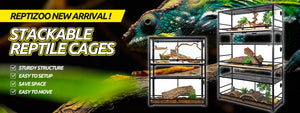Owning a leopard gecko can be an incredibly rewarding experience, but providing them with the right environment is crucial for their health and well-being. A well-designed tank setup not only enhances their quality of life but also makes it easier for you to care for them. In this article, we’ll guide you through the process of creating the perfect leopard gecko tank setup, covering everything from the essentials to optional accessories.
Understanding the Natural Habitat of Leopard Geckos
Leopard geckos originate from arid regions of Pakistan, Afghanistan, and India. Recreating their natural environment is crucial for their well-being. This includes providing warm temperatures, plenty of hiding spots, and a substrate that mimics the arid terrain.
Selecting the Right Tank
Choosing an appropriately sized tank is essential. A 20-gallon tank is suitable for a single leopard gecko, but if you plan to house more, you’ll need a larger enclosure. Ensure the tank has a secure lid to prevent escapes and maintain the right temperature and humidity.
Substrate Choices: Which is Best?
The substrate you choose can impact your gecko’s health. Options like reptile carpet, tile, or paper towels are safe choices. Avoid loose substrates like sand to prevent ingestion, which can lead to health issues.
Heating and Lighting: Creating a Comfortable Environment
Leopard geckos are ectothermic, relying on external heat sources to regulate their body temperature. Use an under-tank heating pad to create a warm spot and a low-wattage bulb for gentle lighting, following a day-night cycle.
Furnishing the Tank: Hideouts and Climbing Accessories
Leopard geckos are nocturnal and love to hide. Provide at least two hideouts—one on the warm side and one on the cool side. Additionally, add climbing accessories like branches to encourage natural behaviors.
Feeding and Water Stations: Promoting Healthy Eating Habits
Offer a shallow dish of clean water at all times. Feed your gecko appropriately sized insects, such as crickets and mealworms, dusted with calcium powder. Young geckos should be fed daily, while adults can be fed every other day.
Maintaining Optimal Humidity Levels
Maintaining the right humidity level is crucial for shedding. Aim for a humidity level of around 40-50%. Providing a humid hide—a hide with moist substrate—can aid in shedding.
Cleaning and Maintenance of the Tank
Regularly clean the tank to prevent bacterial growth. Remove uneaten insects, feces, and shed skin promptly. Perform a deep clean every few weeks, replacing substrate and disinfecting decor.
Handling and Bonding with Your Leopard Gecko
Handle your gecko with care and patience to build trust. Start with short sessions and gradually increase the duration. Remember, some geckos may prefer not to be handled often.
Common Health Concerns and How to Address Them
Monitor your gecko’s health closely. If you notice signs of illness such as loss of appetite or lethargy, consult a reptile veterinarian experienced with leopard geckos.
Beyond the Basics: Advanced Tank Upgrades
Once you’ve mastered the basics, consider adding more features like a bioactive substrate, additional climbing structures, or even setting up a naturalistic terrarium.
Showcasing Your Gecko: The Aesthetics of Tank Decor
Creating an aesthetically pleasing habitat is not just for you—it can also benefit your gecko. Use natural-looking decor to mimic their wild environment.
Leopard Gecko Breeding: Is Your Tank Ready?
Breeding leopard geckos requires thorough preparation. Ensure you have separate breeding pairs, the right nesting spots, and a plan for caring for the hatchlings.
Tips for Photographing Your Gorgeous Gecko
Capture the beauty of your gecko with some photography tips. Use natural lighting, macro lenses, and experiment with angles to get stunning shots.
Conclusion
Providing a comfortable and safe tank setup is essential for the health and happiness of your leopard gecko. By understanding their natural needs and preferences, you can create an environment that allows them to thrive. Remember, a well-maintained tank will lead to a content and vibrant gecko.


